The Moscow Metro, which has become home to many during the war
When in the summer of 1941 over Moscow for the first time rattled the enemy planes, started a completely different life for residents of the capital. But very soon, people are accustomed to the phrase "air raid" and the subway has become for many a second home. Here we are showing movies, a library and creative clubs for children. And with the metro builders continue to build new tunnels and prepared for chemical attack. Such was the subway in the early 1940s ...
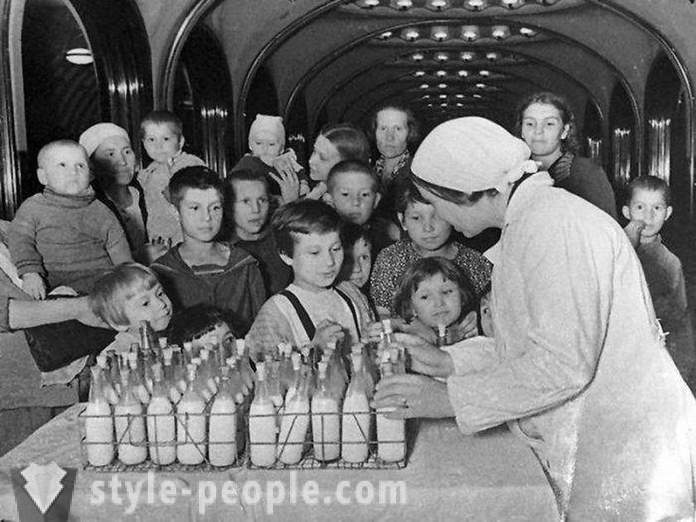
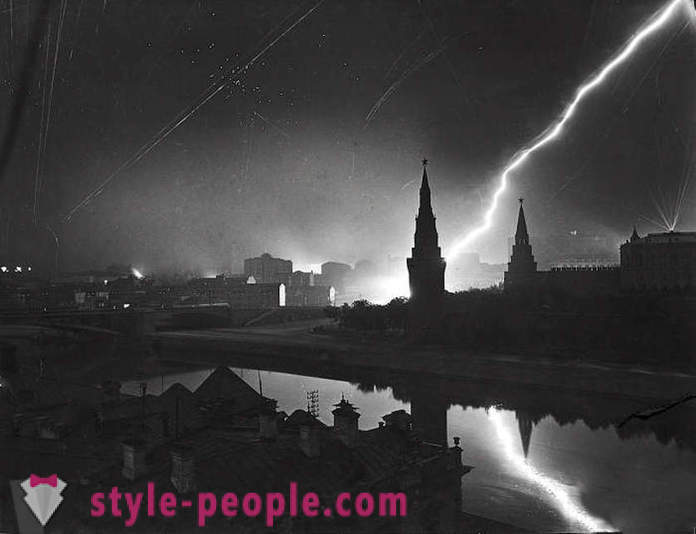
German air raid on Moscow, July 26, 1941 / Photo by Margaret Bourke-White
The first airstrikes
In principle, at the beginning of the war underground it has been prepared to ensure that people take, and in the first raids, many platforms and tunnels earned as a bomb shelter. During the first raid, on the night of 22.07, half a million Muscovites took refuge in the subway.
But, of course, at first it was not without incident. Somewhere station opened at the wrong time, where some people were unable to get information about the entrances to the refuge. And in the "Arbat" after resetting the high-explosive bombs population in a panic ran to the station, people began to fall, and as a result 46 people on the stairs were crushed to death.
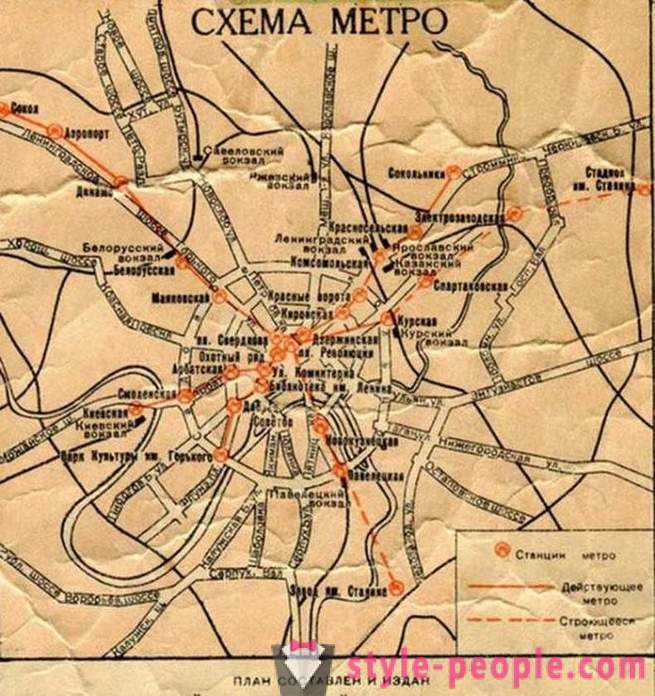
This was the underground circuit to the beginning of the war. (Date of preparation - March 1940). /Foto:nastroy.info
But in the days that followed was quickly converted subway tunnels under the third stage of the bomb shelters and make inputs. Blue-worked 2-3 consecutive shifts. Appeared on the streets Information pointers hundreds metrostroevtsev keep order and inform passers-by.
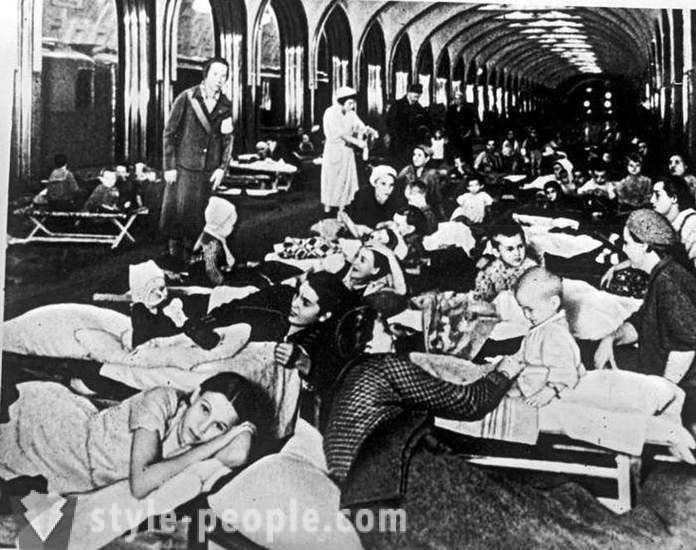
On the first day during the air raid underground took half a million citizens. / Photo: moscovery.com At first, people complained about the horrible stuffiness. It was necessary to enhance ventilation and to arrange a permanent supply of compressed air tunnels under construction, as well as smoothly pumped water. Just in case, backup power and lighting was provided. And by September the special rules for the use as an underground bomb shelter have been developed.
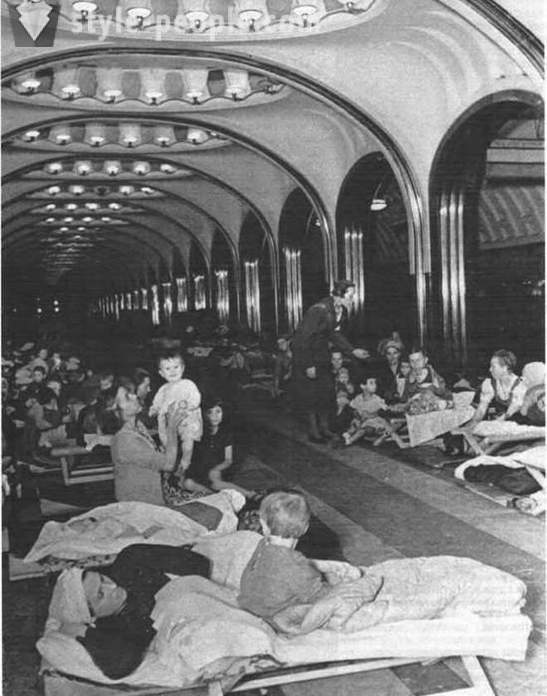
The metro station during the air raid. /Foto:fotostrana.ru
Metro wanted to destroy
October and November 1941 to become Moscow's most difficult: it was a very great danger that the enemy will enter the city. In the area of Mozhaisk defensive line position it was so dysfunctional, that on October 15 of the Civil Defense issued a decree "On the evacuation of Soviet capital of Moscow", signed by Stalin. It mentions that in the event of the enemy at the gates of the NKVD in Moscow was "to produce an explosion of companies, warehouses and institutions that can not be evacuated, and all the underground electrical equipment (excluding water and sewer)."
Metro immediately shut down, and began to prepare for the eventual destruction. Night began preliminary work, and on the morning of the 16th Metro is not opened for the passengers. However, the evening was canceled the decision to destroy the subway.
Subway in November 1941
It is approaching an important date for the Soviet people - 7 November, and it was decided, in spite of the plight, noting her in Moscow, the most solemn. On the eve of the parade the metro station "Mayakovskaya" turned into a chic lounge. Here we held a meeting of the Moscow Soviet and a concert. Present at this action the chief object later recalled that his station that day was kind of theater: have been established scene with a microphone and loudspeakers, spectator seats and, in addition to conventional lighting, burning bright spotlight. On one of the tracks the train was equipped with a snack bar. Stalin came to "Mayakovsky" in the electric train. When he went to the scene and began the report, many of the audience, not for the first month downcast alarming news from the front, looking at him, not looking up, and there was a deathly silence, well, when he finished his upbeat speech, standing ovation began. However, many viewers noticed that the leader had lost weight ...
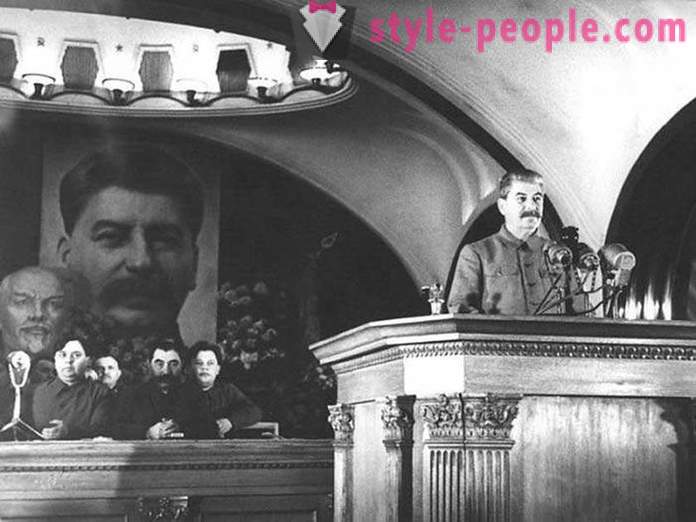
Stalin Speech subway November 6, 1941 / Photo:. Fotocdn.net
By this time, Muscovites have become accustomed to the air strikes. According to official statistics, in November, during the air raid in the underground refuge to 30 thousand to an estimated 350,000. The city authorities were very concerned that many Muscovites were killed because of their carelessness: hearing the siren, they stayed at home. Some days happened 5-6 air raid, and people are just tired of being afraid. Moreover, in the food queues in women it was an unwritten rule: if during an air raid someone left the place and returned once the threat subsided, "fugitive" was not allowed back. It was believed that people got scared and did not show solidarity with the rest.
Meanwhile, at the time the subway could take as many as 2 million. People, and people go on about the need to go on the subway all night.
Night underground city
Stir in the subway stopped from 22.00 to 8.00, and all this time the station worked in shelters mode. Ever since the first weeks of the war for the descent, which is the stairs were made in the tunnels. In the subway have put thousands of wooden flooring, as well as single-stage and two-tiered bunks.
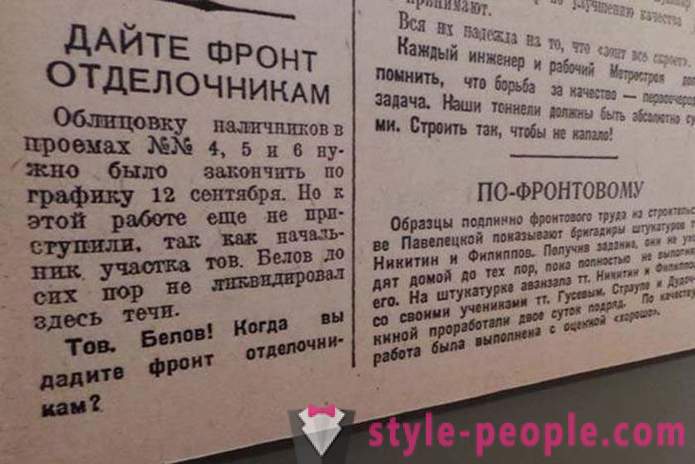
In the subway stations hung newspapers that wrote not only the achievements but also published criticism. /Foto:rg.ru
In the metro and near the station operates clinics and insulators for patients. Underground were opened children's rooms, where children played and held classes, as well as facilities for young mothers with babies, which were cots. Of course, we were in the subway and toilets.
The metro runs the library from time to time were concerts and film screenings, here Muscovites offered newspapers and magazines. And, of course, political lectures were constantly on the subway.
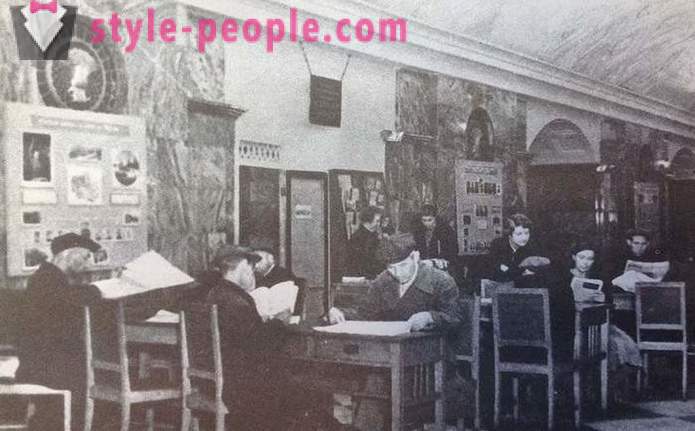
bibilioteka the subway. /Foto:pastvu.com
Because it does not exclude the risk of Germans use of chemical weapons, tunnels and remade under gas-proof shelter. Workers have installed special gas-tight jumper and airtight doors, as well as fans, who had to clean the contaminated air. Fortunately, these measures have not proved useful.
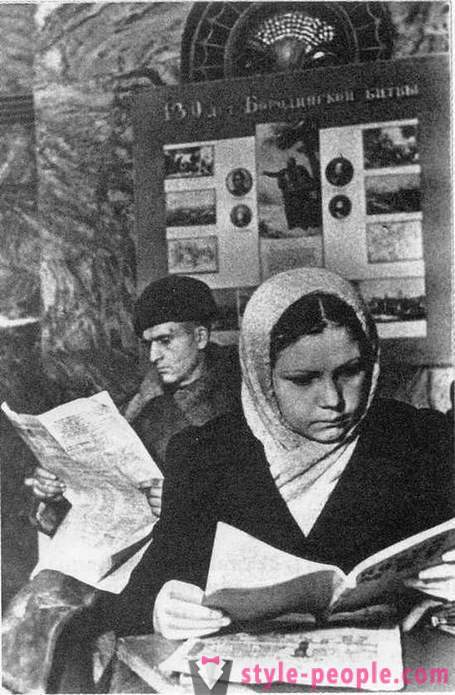
During the air raid ... /Foto:userapi.com
According to statistics, in 1941 in the underground refuge for a total of 13, 9 million people, in 1942 -. 303 000. During the air raid in the subway were born more than 200 children. Medical assistance in 70 000 people applied for the first year of the war. And in the first month of air strikes almost half of all complaints was associated with neurological disorders.
New station
Despite the fact that the underground for a while turned into a real underground city, the construction of new stations and tunnel construction continued.
At the beginning of the third stage of the war the metro was already finished, but the start motion metrostroevtsy could not, because they do not have escalators. The fact that they are produced at the Leningrad plant, and those at the time were evacuated and have not yet started work on new locations. As a result, it was decided to release them at the Moscow plant. The capital work quickly mastered the new business and went to work with such enthusiasm that year released twice tapes than before the war produced Leningrad. Later, in Moscow's Perovo even opened escalator plant.
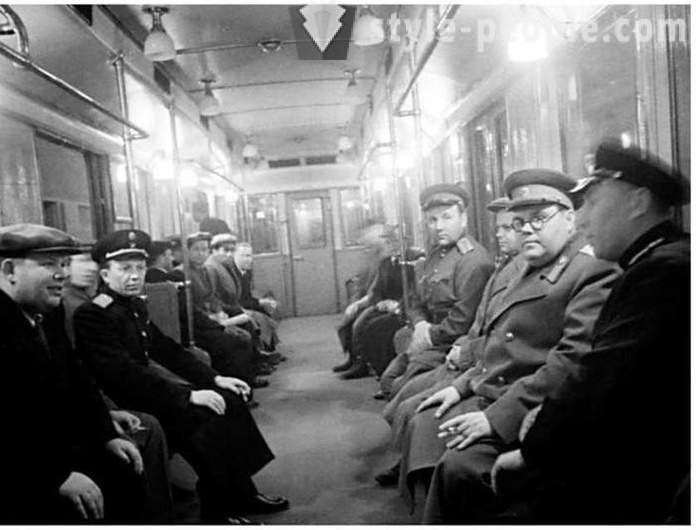
third secretary MK and MGK VKP (b) Shcherbakov adopts built during the war, "Electrozavodskaya" subway station in 1944. / Photo: moscowchronology.ru
In 1943 metrostroevtsy ran part of the way from the "Sverdlov Square" (modern "Theater") to the station "Plant them. Stalin "(in 1956 it was renamed into" Avtozavodskaya "). In the same year opened "Paveletskaya" and "Novokuznetskaya", and in early 1944 allowed the movement of the "Kursk" to "Izmailovsky Park" (now - "Guerrilla").
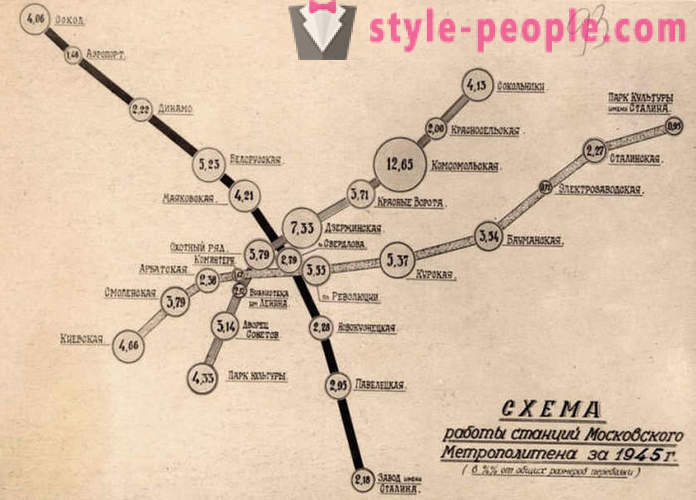
Metro map in 1945. /Foto:rgantd.ru













































